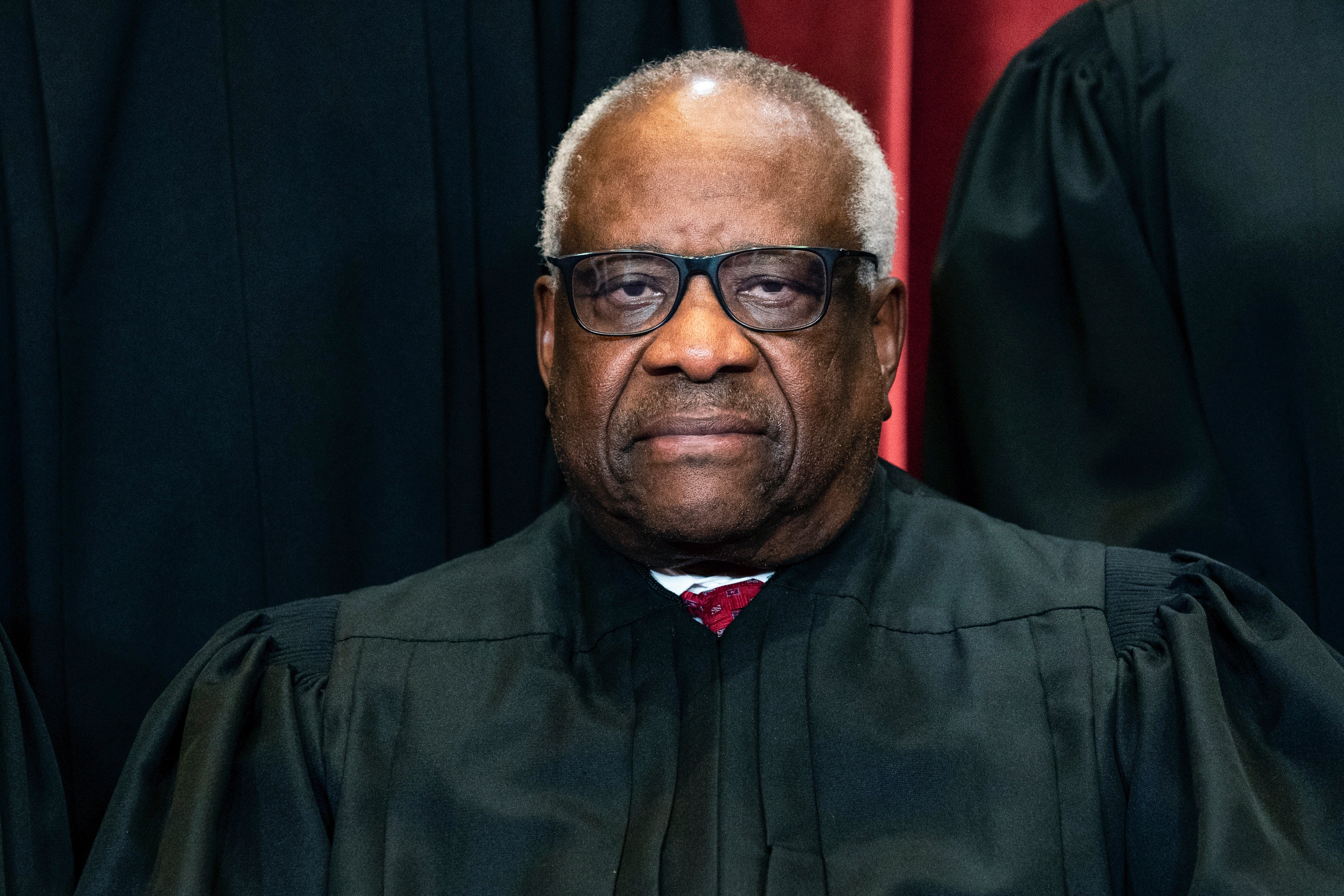Dare to imagine a world where we aren’t all obsessing over Clarence Thomas’s health
There’s a simple way to change up the Supreme Court that would mean we’re not reduced to ghoulish death watches every time a justice is taken ill


Supreme Court justice Clarence Thomas was hospitalized with flu-like symptoms over the weekend. Spokespeople have said he does not have Covid, and that he is not in immediate danger.
In any health emergency involving anyone on the court, though, it’s impossible not to start to think about what it means for the country. Thomas is probably the most conservative justice on the court. He is expected to be a leading vote in gutting abortion rights nationwide. He’s also been at the vanguard of the Independent State Legislature doctrine, which would allow local officials to set election rules without oversight. That would effectively allow Republican state officials to nullify any election result they don’t like, and would be the end of small-d democracy in large areas of the country.
Supreme Court justices serve for life. The make-up of the court is dependent on the health of its judges. As a result, the fate of millions of people rests one way or the other on Thomas’ recovery, and on whether he happens to become seriously ill when a Democratic president and Senate can choose a replacement.
Similarly, Republicans during Trump’s presidency could hardly restrain their glee when Justice Ruth Bader Ginsburg died, leaving them free to rush through a conservative replacement and solidify conservative control of the court. The current system of life tenure encourages a series of ghoulish death watches.
That life tenure is enshrined in the Constitution and is very difficult to change. But there are other fixes that could help. Specifically, we could replace justices after each presidential election, rather than when they voluntarily or involuntarily vacate their seats.
The proposal is simple. After each presidential election, the incoming president chooses one new justice for the court. Justices who die or retire during the term will not be replaced.
Counting Biden’s nomination of Ketanji Brown Jackson to replace Justice Steven Breyer, there have been 14 justices nominated over the last 11 presidential terms, back to 1980. Since some justices would probably stay on longer if they didn’t need to time their retirements, one a term would get the replacement rate about right.
It’s true that, with this plan, the size of the court will fluctuate somewhat over time. For instance, presuming the news system started with Biden, he would have appointed one justice as soon as he came into office. The court for a while would have had 10 justices, unless Breyer decided to retire (which he might not have if he didn’t have to time his retirement to ensure a Democratic replacement.)
Having an uneven number of justices means that there will sometimes be tie decisions. That means lower court decisions are simply left intact. This isn’t ideal, but it’s happened frequently in the past. Most notably, the court was down a justice for almost a year when Senate Majority Leader Mitch McConnell refused to seat a Democratic replacement for deceased Republican justice Antonin Scalia.
McConnell’s interference in the nomination process was a naked partisan power grab. The current system, based on chance and the unpredictable health of elderly justices, encourages partisan extremism, and a mad dash for advantage when justices fall ill.
It also creates bizarre and ugly incentives for the justices themselves. They have to collude with the executive branch to step down to create partisan advantage (as Justice Anthony Kennedy did). Or they refuse to time their retirement and allow their legacy to be gutted by their successor (which is what happened to Ginsburg.)
Providing for a smoother, predictable, regular transition would reduce the partisan tension and animosity around each nomination. It would also ensure there is plenty of time for each nomination — so that, for example, Republicans would have no excuse not to replace a nominee like Bret Kavanaugh or Clarence Thomas credibly accused of sexual harassment or assault. It would also make it more difficult for Republicans to stonewall nominations to wait for the next president, since they’d need to keep a nominee bottled up for four years.
Linking Supreme Court nominations directly to elections would also make the court more responsive to the political process, and put it more in line with public opinion. Currently, Republicans have won the popular vote in a presidential election exactly once since 1988. Yet, thanks to Republican structural advantages in the Electoral College and Senate, and to McConnell’s partisan brinkmanship, the GOP currently has a 6-3 majority on the court. One seat per presidential election wouldn’t fix that immediately, and wouldn’t balance out all the GOP’s undemocratic advantages. But it would be a start.
Again, if this plan had been put in place before Biden’s term, we’d have a 6-4 court now (presuming Breyer didn’t retire.) If it had been put in place before Trump’s term, we’d have a 5-4 court (presuming Kennedy didn’t retire). Either of those would more accurately reflect the will of a closely divided public than the current reactionary supermajority.
What are the chances of a plan like this actually passing Congress? Right now, not great. But Democrats have been talking about possibly adding seats to the court. A one-justice-per-term approach would be a compromise that might garner more support while addressing some of the same concerns about the court’s growing lack of legitimacy.
In the meantime, everyone waits for updates on Clarence Thomas’ medical condition.
Bookmark popover
Removed from bookmarks